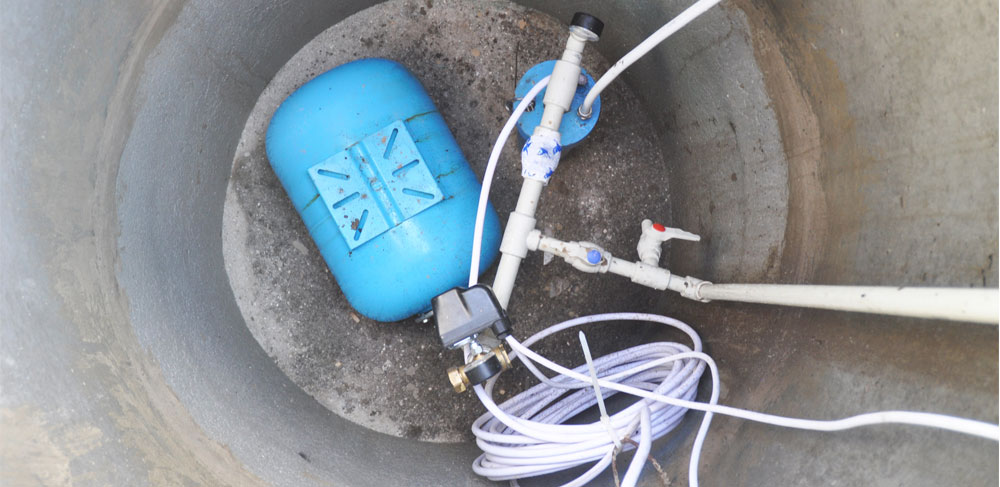30 Jul Well Pump 101: Keeping Home Water Service Running Smoothly
Every time you turn on the shower or fill a glass from your faucet, your well pump is the reason you have a steady supply of safe, clean water. Most pumps, whether submersible or a motorized jet pump, use suction to draw water from the ground and into a pressurized tank in your home. A typical tank holds 10-30 gallons of water and is refilled by the well pump as needed throughout the day, at a rate of eight to 12 gallons per minute.

Not surprisingly, the constant demands on this important piece of equipment will eventually take a toll. Before this happens and you find yourself without water, read the warning signs, troubleshooting tips, and maintenance recommendations from the licensed plumbers at Cliff Bergin & Associates.
A Not-So-Well Well Pump
Most well-water systems perform reliably for 10 to 20 years, but watch for these signs that your pump needs attention:
- Poor pressure—a significant drop in shower pressure or dribbling faucets could indicate pump problems.
- Running erratically—if your well pump turns on and off for no reason, or turns off too quickly, it could be caused by a pressure control switch, improper air charge, or a hole in the piping.
- Running constantly—a well-functioning pump should not have to run 24/7 to keep up with your needs.
What Impacts Performance?
Your water tank and well pump work simultaneously to meet your daily water demands. Factors of each, along with water quality, affect the reliability and life of your system:
- Tank material—unlined steel tanks erode faster than internal, bladder-type units.
- Installation—dissimilar metals coming in contact with each other could cause pressure problems or leaks.
- Water makeup—over time, heavy minerals and certain chemicals can corrode components or clog lines.
- Maintenance—ignoring minor problems and foregoing regular inspections can lead to disruption of service and costly repairs.
Troubleshooting Well Woes
There are lots of reasons for having little or no water. Start by checking these top four trouble areas:
- Lost power source—electricity runs the pressure switch on your tank and pump. If you have power in other areas, check the circuit breaker in your electrical panel. If that doesn’t restart the system, switch it off and schedule a service call.
- Lack of water—a sputtering stream, murky water, or an odd taste all may indicate a lack of water in your well. A drought may be a temporary cause of the low water table, or new construction in the area may be drawing from the same supply. In some cases, you can reposition your submersible pump deeper or you may need to consult a well driller.
- Wrong pump size—if your pump and pressure tank aren’t sized right for your needs, your system may be cycling too often or not enough. One of our plumbers can determine if your well pump is adequate for the number of faucets and appliances in your home.
- Sediment in the water—dirt, hard water minerals, or other debris are all abrasives that can damage your pump bearings and other components. They can also reduce water flow and stop your pump from working properly.
Complete Plumbing Repairs and More
Water must travel through a complex system to get from the ground to your faucet, and any problems along the way could affect your service. Annual checkups ensure your well pump’s integrity, but our plumbers can also help with a full range of plumbing repairs. We also install water softeners, water heaters, iron filters, reverse osmosis systems, and more.
Need solutions beyond water pumps and plumbing? As a Factory Authorized Carrier® Dealer, we’re also the better choice for complete heating and cooling in North Shore neighborhoods. Call us for help with any of these home services.



